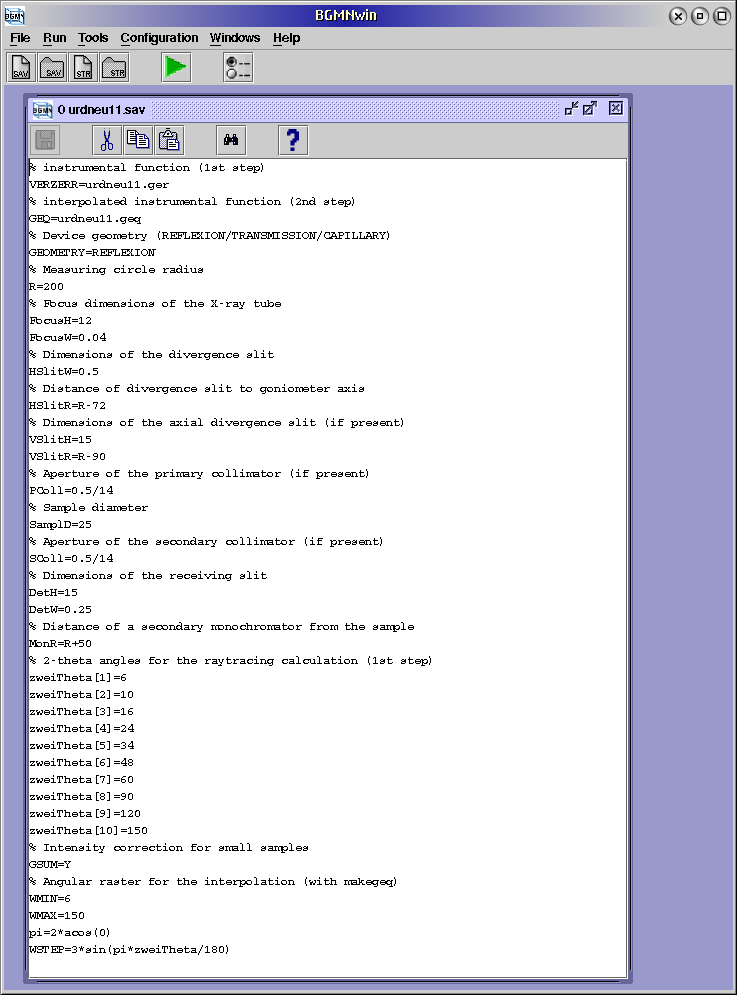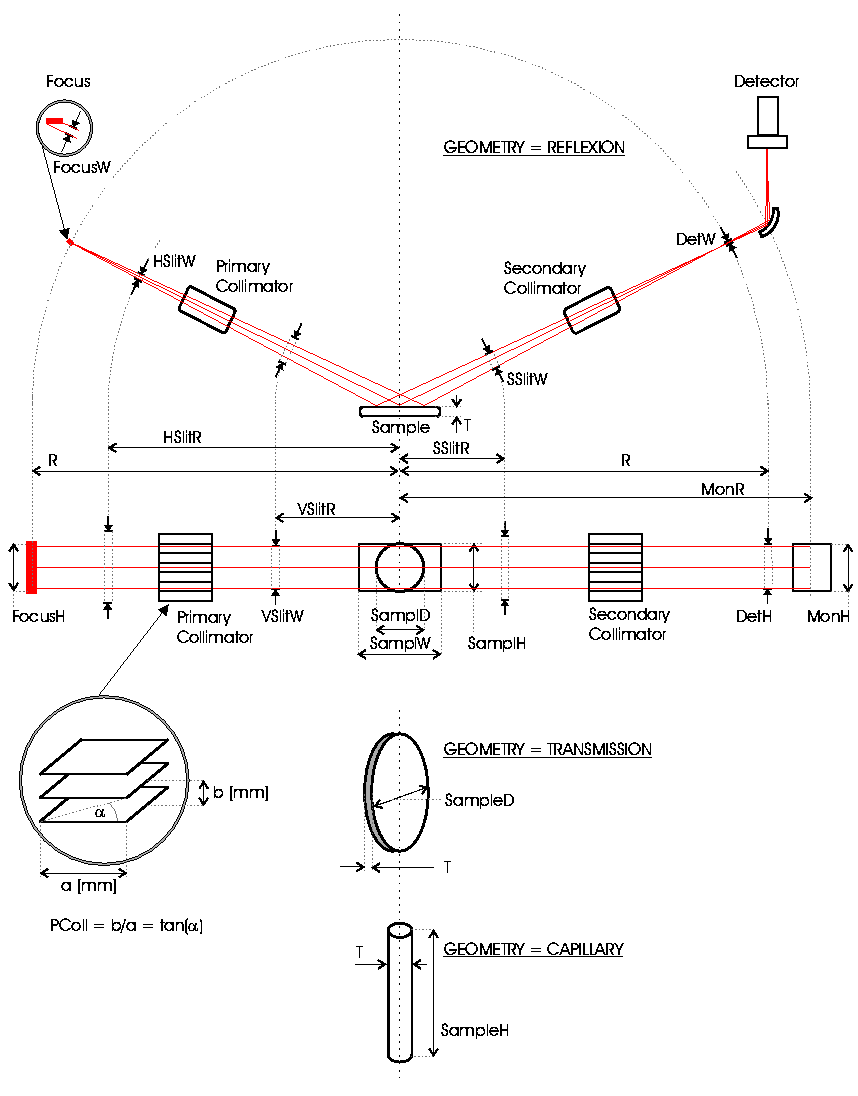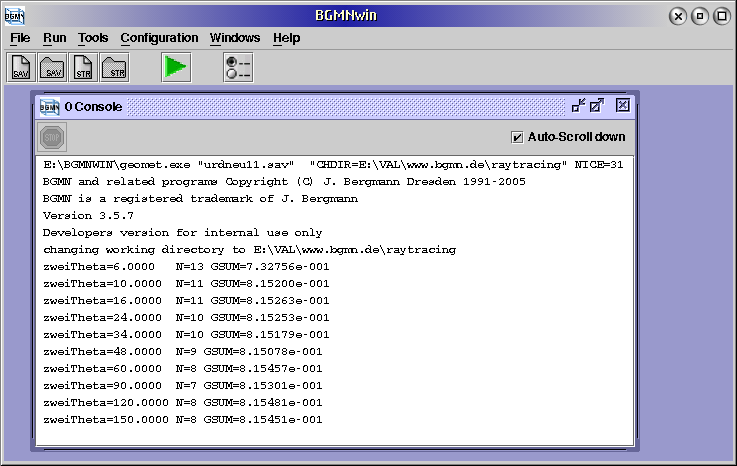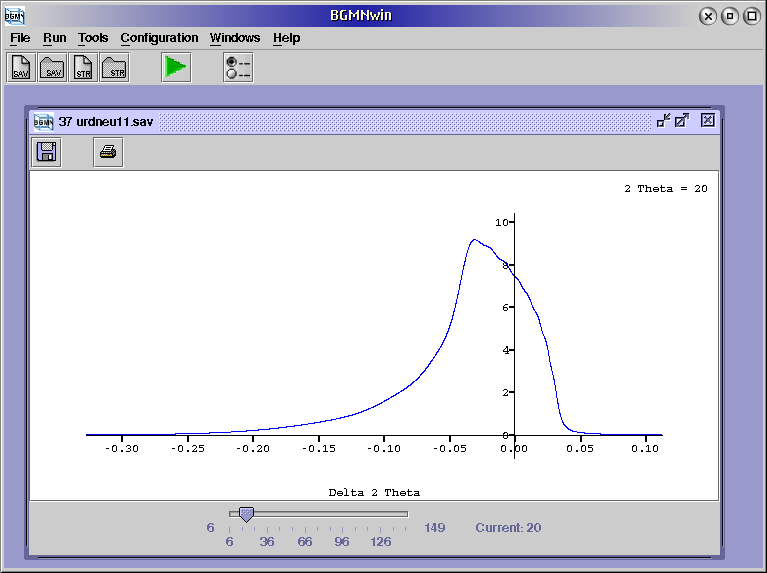
Site map




Site map |
||
 |
 |
 |
PLASTER\urdneu11.sav file and open it:

The file contains the data as necessary for the calculation of the geometric profile. The unit of distances and lengths is mm. Comment lines start with %. For an extended explanation of a variable put the cursor of your BGMNwin window to that variable and press F1 or see the following image:

or see the list of variables.
The calculation is carried out in two steps. First, a raytracing algorithm
models the distorted profiles at discrete 2Θ angles
(zweiTheta[..]).
In BGMNwin, select
Run→Geomet
browse to the above file and open it:

A raytracing algorithm needs to millions of events. Don't be astonished
at the time-intensive calculation. After the raytracing calculation
an interpolation is necessary to construct a file for the Rietveld
calculation with BGMN. Select
Run→MakeGEQ
browse to the above file and open it. The interpolation starts and the
actual angular steps will be displayed.
Now the instrumental function is ready to use.
You can display its shape at each 2Θ position by selecting
Tools→Show Device Function
Again, browse to the above file and open it.
wait some seconds, and shift the bottom slider to the
2Θ value you wish.
In the figure the shape of the instrumental function for 2Θ=20° is shown.

Please note the distortion and the shift of the maximum to lower angles.These effects are later automatically considered in the Rietveld calculation. You can see some more
and explanations to this problem.